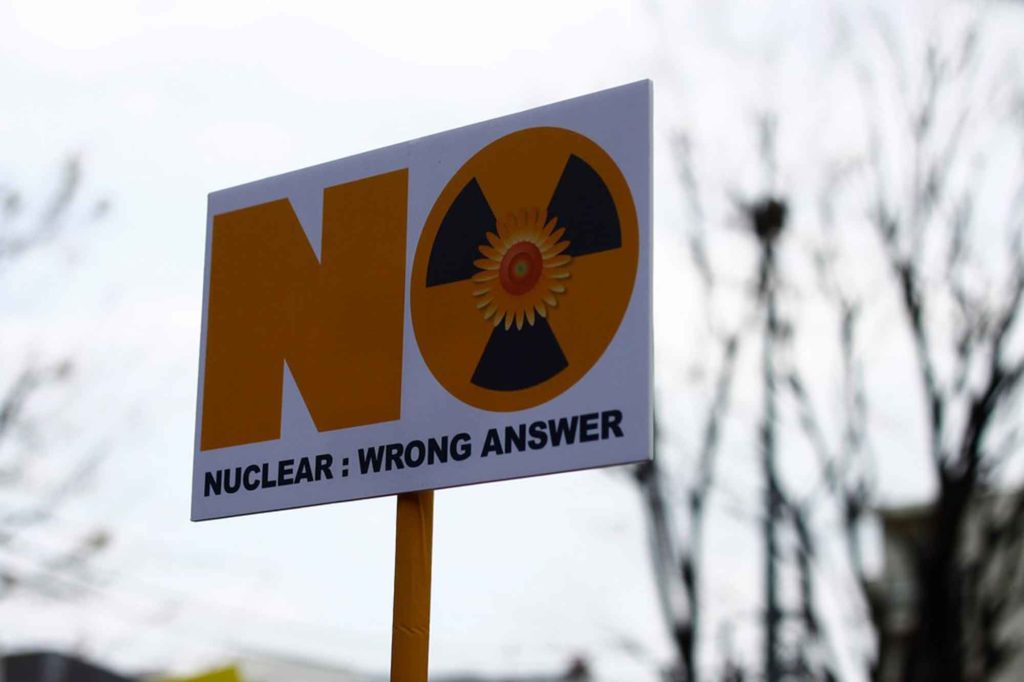
Idaho congressman Mike Simpson has unveiled a plan to remove the four Lower Snake River Dams (LSRD). These dams –Ice Harbor, Little Goose, Lower Monumental, and Lower Granite – are all situated in Oregon along the lower Snake River. The motivation behind the proposal, which Simpson released in early February 2021, is to rescue salmon, the iconic species of the Pacific Northwest whose populations are dangerously low.
The four dams were completed in the 1970s and have a maximum generating capacity of 3,000 megawatts. While that seems like a massive amount of energy to replace, these dams are only producing at those rates a handful of days per year when water is highest during spring runoff. In reality, annual output is closer to 1,000 megawatts because the turbines in all of the dams rely on river conditions to spin, and reservoirs are not utilized to regulate the flow of water. During times of the year when energy is most in-demand (winter and late summer), these dams are only producing about half that as water levels are lower. This reality will make it more manageable to replace the lost power if the dams were breached.
But what’s the motivation behind the plan? Salmon.
Snake River wild salmon populations have been declining since the 1950’s. Salmon rely on rivers to migrate inland from the ocean to spawn. Once the eggs hatch, juvenile salmon will live in freshwater for about a year before making the journey to the ocean to live their adult lives. After two to five years in the ocean, salmon will return inland to the same areas where they hatched, often to nearly the exact same place their parents spawned. With rivers being the only way for salmon to travel from the ocean to their spawning sites, their ability to traverse these waters is of vital importance. Scientists estimate that salmon need to be able to return to these spawning grounds at a rate of 2 to 6 percent. Since the LSRDs were constructed, return rates have rarely reached even 2 percent. While there are eight dams in all along the Snake River, it is expected that the removal of the four LSRDs would make a big enough difference to allow salmon to spawn at a sustainable rate and for their population to rebound.
That’s where Simpson’s plan comes in. He has proposed the removal of the four LSRDs in an attempt to provide an opportunity for these salmon and steelhead populations to recover. But these dams do serve some essential functions, energy generation being one of the most important. That’s where things get a bit trickier…

The biggest question that must be answered as discussions around Simpon’s plan progress is simple: how do we replace the energy generation that will be lost from the removal of these dams? Energy usage in the northwest (and all across the US and the globe) continues to rise, so figuring out how to go about replacing the lost energy from these dams will be crucial. Simpson’s plan around energy replacement presents a lot to be excited about. A proposed $10 billion will be dedicated to clean power replacement for the LSRD lost generation. Options outlined include some promising, sustainable solutions such as renewables, battery storage, pump storage, increased transmission capacity, and energy efficiency. One alarming option included in this proposal is small modular nuclear reactors.
Small modular nuclear reactors (SMRs) are mentioned as a possible replacement for some of the lost energy generation. Utilizing nuclear energy for this (or any) purpose would do more harm than good. SMRs are a theoretical type of advanced nuclear reactor that would be smaller and could be built at a manufacturing center then sent to sites to begin producing power.
These SMRs, the latest attempt to revamp the nuclear industry, still pose the same risks as more conventional nuclear reactors. They will require fuel, the mining of which has been proven time and again to contaminate miners and the environment. It’s also important to note the disproportionate effect uranium mining has had on low income and indigenous communities. This fuel will not become any less dangerous once it has reached the end of its life as a viable nuclear fuel.

In the US, spent nuclear fuel (SNF) has no safe disposal mechanism. Currently, SNF is stored on the sites at which it was used to power reactors, either in pools or in dry casks. Adding to the pile of 83,000 tons of SNF that is currently sitting at sites across the country is an imprudent and dangerous path forward. It is important to remember the impetus of this whole plan: to protect salmon and steelhead. Bringing radioactive material that will eventually become waste that will be stored atop the Snake River aquifer defeats the very purpose of this plan. With waste that will remain hazardous to humans and the environment for tens of thousands of years, SMRs are not congruent with the goal of congressman Simpson’s plan.
With a proposal that already has a high price tag, cost efficiency must be considered. There is no debating with the economics of nuclear energy- it’s expensive. According to Lazard’s 2021 Levelized Cost of Energy Analysis, the cost of nuclear power is the second highest of all sources measured, and is higher than all of the renewable energy sources the study looks at. The mean cost per megawatt hour (MWh) of nuclear energy comes in at an astounding $163. Wind energy costs only $40 per MWh, and solar came in even lower at $37 per MWh. The cost trends of these forms of energy are telling as well. Over the last 12 years, the cost of wind and solar energy per MWH have decreased by 70% and 90%, respectively. While the cost of nuclear energy per KWh has increased 33%. The cost of wind and solar continues to decrease, while the cost of nuclear continues to rise. All other arguments aside, the clear economic advantage of renewables can not be overstated. The lost power generation of the removal of the LSRDs is significant. And with Simpson’s whole plan estimated to cost $34 billion, it will be crucial for our collective tax dollars to invest in energy at a price point that will allow this plan to come to fruition.
With the costs of renewables continuing to drop, and the technology around them continues to improve, the focus of replacing the power that will be lost from the LSRDs should be on wind and solar energy. Boise State University’s John Gardner is optimistic around the ability for clean energy to be utilized as a replacement for the LSRDs, saying “There’s a big appetite to invest in this area. I think replacing the energy-generating capacity of the dams is not going to be difficult. I don’t think it’s a huge lift.”
Simpson’s salmon plan is without a doubt an exciting and overdue step to protect the pacific northwest’s salmon and steelhead. The importance of simultaneously helping wildlife while also transitioning to a more sustainable and responsible energy grid cannot be overstated. But the possibility of constructing dangerous and dirty nuclear reactors must be rejected in full.
